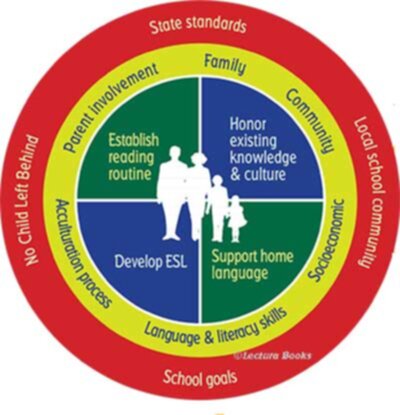Family literacy is an important educational goal. When we attain family literacy we ensure the academic achievement of our children. Family literacy refers to the interlocking relationship between three areas: 1) the educational levels of parents, 2) parent involvement, and 3) the success of children in school.
These areas are interrelated. Each depends on the other two to be present in order to achieve effective results. In our efforts to improve family literacy we focus on teaching parents to learn how to help their children learn. This is the way to improve the educational level of the parents while also involving them in their children’s school. In order to do that, the parents must understand the language and the level of literacy of their children in school. Once they understand that, they can help their children. As they work with their children we see an improvement in the achievement levels of the children. That’s how these areas work together. The essence of family literacy is to bring the parents and the children together in the school setting.
A best practice is a technique based on experience and research that has proven to reliably lead to a desired result. Here are the four proven best practices for family literacy:
- Provide a set of stimulating interactive activities for parents and children.
- Train parents in reading and English-language development so they can be active partners in their children’s learning.
- Demonstrate to parents the strong connection between literacy and school success for their children.
- Use culturally appropriate reading materials for children and their families.

When The Latino Family Literacy Project presents its workshops it does so with the idea of having these four best practices or core components in our program. We do this by making the family the center of our work. From that center we then build concentric circles of knowledge and influences around the family unit.
We start with the innermost circle which is in the home and that includes establishing regular reading routines, developing English as a Second-Language, supporting the home language, and honoring the existing home culture.
The next circle extends to the best practices outside the home. In this second circle we include parent involvement in school, the acculturation process, language and skills development, socioeconomic influences, the community, and extended family members.
The third outermost circle represents the world at large and includes school goals, and the local school community.
The interactive nature of this set of influences and the use of the best practices model for family literacy are what makes The Latino Family Literacy Project an effective program that is being used in schools throughout the United States.
If you would like more information, please contact us toll-free at 877-LECTURA or call 626-799-4371 or visit our website.
Hoping to see you at a workshop!
